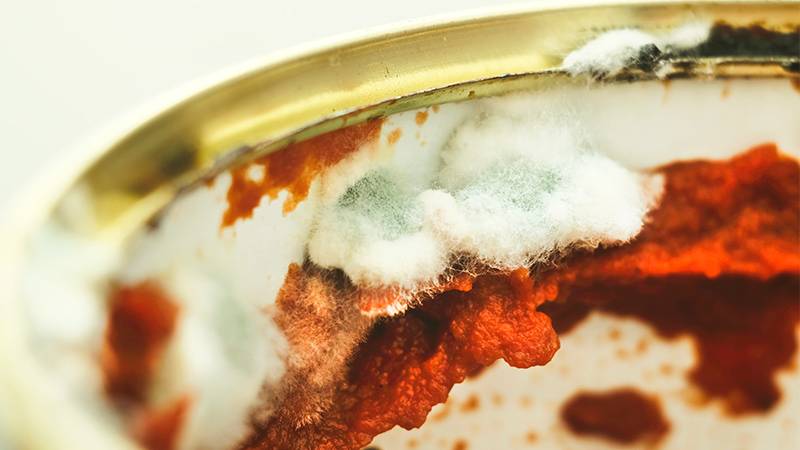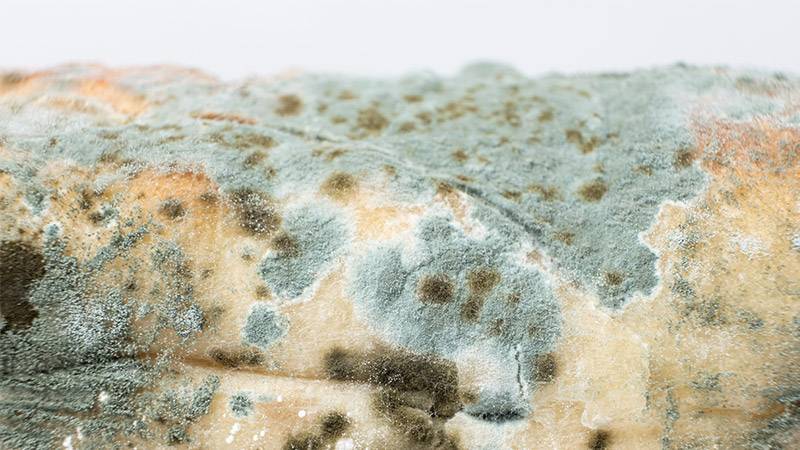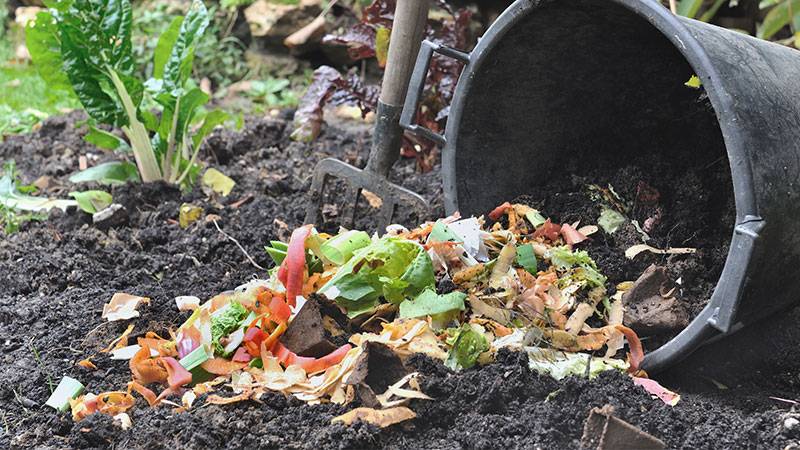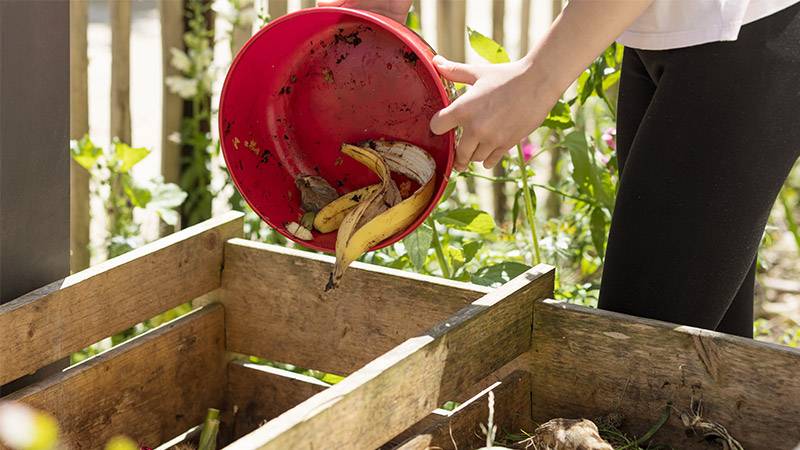Composting is a fascinating journey, transforming kitchen scraps and yard waste into nutrient-rich, garden-friendly gold. It’s a process teeming with life, where microorganisms, insects, and enzymes break down organic matter.
However, spotting mold in compost can often raise eyebrows and a plethora of questions. Is it a friend or foe to our composting endeavors? Understanding mold in compost is crucial as it plays a significant role in the decomposition process.
So, let’s dive deep into the world of composting molds and unravel the mysteries surrounding their existence in our compost bins.
Is Mold in Compost Good or Bad?
Mold in compost is a paradox, acting as both a beneficial ally and a potential adversary. Immediately answering the looming question—mold in compost is both good and bad. It’s a crucial player in the composting world, facilitating the breakdown of organic matter and enriching the soil with vital nutrients, turning our everyday kitchen scraps and yard waste into a gardener’s treasure—nutrient-rich, fertile compost.
However, the presence of mold is not always a cause for celebration. While many molds are harmless and beneficial, aiding in the organic decomposition process, some can be harmful. Certain molds produce mycotoxins, substances detrimental to plants, animals, and humans.
These undesirable molds can lower the quality of the compost and present risks during handling or when applied to the garden, affecting the produce grown in it.
Balancing the good and the bad is key in composting. By maintaining optimal conditions—right moisture, adequate aeration, and appropriate temperature, we can encourage the beneficial molds and microorganisms while deterring the harmful ones. Understanding and managing mold effectively ensures the production of safe, high-quality compost, leading to flourishing plants and a thriving garden ecosystem.
Types of Mold in Compost
When you peek into your apartment compost bin, the variety of molds you might encounter can be quite diverse. These molds, each with its unique characteristics, play different roles in the composting process.
Let’s delve into the common types of mold found in compost and understand which ones are beneficial and which ones we should watch out for.
White Mold
White mold is often a herald of healthy composting activity. It’s a beneficial fungus, specializing in decomposing organic materials and accelerating the composting process.
Its presence signifies the transformation of organic waste into nutrient-rich, fertile compost, essential for robust plant growth. Embracing white mold is embracing a vibrant, productive garden ecosystem.

Green Mold
Green mold, commonly spotted on food remnants, is usually benign but signals excessive moisture in your compost pile. While it doesn’t harm the composting process, it’s a wake-up call to balance the compost’s moisture levels.
Regular aeration and turning of the compost pile can mitigate green mold growth, maintaining a conducive environment for efficient decomposition and preventing any unfavorable conditions that could hinder the composting process.

Orange and Yellow Mold
Orange and yellow molds are typically harmless entities in the composting ecosystem, actively participating in the decomposition of organic substances. They work synergistically to break down organic materials, recycling nutrients back into the compost.
Their presence is a natural aspect of composting, contributing to the formation of nutrient-rich, beneficial compost to nourish plants.
Blue and Green Mold
Blue and green mold, or Penicillium, is renowned for its antibiotic properties, offering benefits to the composting process. However, its potential as an allergen necessitates cautious handling.
Wearing protective gear and avoiding direct contact can mitigate allergic reactions, allowing compost enthusiasts to harness its benefits while maintaining safety and well-being in the composting journey.

Brown Mold
Brown mold is usually a benign presence in compost, serving as an effective decomposer in the composting ecosystem. It aids in the breakdown of organic materials, facilitating the release of nutrients back into the compost. Its role is fundamental in enriching the compost, contributing to the overall health and fertility of the soil, fostering a nurturing environment for plant growth.
Why Does Your Compost Have Mold?
Mold in compost is like the inevitable guest at the decomposition party, arriving when the conditions are just right. So, why does mold grace our compost bins and piles? It’s all about creating the perfect environment for these fungi to thrive.
Mold, being a decomposer, is attracted to places rich in organic matter, and a compost pile is a banquet for them. When we add kitchen scraps, yard waste, and other organic materials to our compost, we are essentially setting the table for molds to feast.
However, mold growth is particularly prolific when the compost pile has excessive moisture. Think of it as adding a splash of water to a sponge; the mold absorbs it and proliferates. Maintaining the right moisture level is crucial; it should be like a well-wrung-out sponge, moist but not dripping.
Temperature is another factor. A compost pile is a hub of microbial activity, generating heat. When the temperature is conducive, molds find it easier to grow and spread.
Lastly, poor aeration can also invite molds. A well-aerated compost pile ensures that beneficial microorganisms have enough oxygen to decompose organic matter efficiently, preventing the dominance of molds.
Understanding these conditions and managing them effectively is key to controlling mold growth in compost, ensuring a balanced and healthy decomposition process, and producing high-quality, nutrient-rich compost for our gardens.


Read More:
Can You Put Moldy Food in Compost?
When it comes to composting, a common query is whether moldy food can join the mix. The simple answer is, yes, you can put moldy food in your compost pile or bin. Moldy food is already in the decomposition process, making it a suitable candidate for composting.
Mold on food is a sign that microorganisms are breaking down the organic matter, a fundamental aspect of composting. Adding moldy food can actually accelerate the composting process, as it introduces more decomposing organisms to the pile, speeding up the breakdown of other organic materials present.
However, it’s essential to maintain a balanced composting environment when adding moldy food. Ensure that your compost pile has a good mix of greens (nitrogen-rich materials like food scraps) and browns (carbon-rich materials like dried leaves) to avoid unpleasant odors and pests. A well-balanced compost pile promotes efficient decomposition and produces high-quality, nutrient-dense compost.
Remember, while moldy food is a go for composting, avoid adding meat, dairy, and oily foods, as they can attract pests and create foul smells. Embracing moldy food in composting is about understanding its role and managing the compost pile effectively to reap the benefits of nutrient-rich compost for a flourishing garden.

How to Get Rid of Mold in Compost
Discovering mold in your compost pile can be disconcerting, but fear not! Managing and preventing mold is quite straightforward. Here are some strategies to keep your compost healthy and mold-free:
Maintain Balance
Ensure a balanced mix of ‘greens’ and ‘browns’ in your compost pile. Greens are nitrogen-rich materials like kitchen scraps, while browns are carbon-rich materials like dried leaves and newspaper. A balanced compost pile decomposes efficiently and is less likely to develop harmful molds.
Regular Turning
Turn your compost pile regularly to aerate it. Proper aeration provides oxygen to beneficial microorganisms, aiding in the decomposition process and preventing mold growth by creating an unfavorable environment for it.
Control Moisture Levels
Keep the compost pile as moist as a wrung-out sponge. Overly wet conditions can promote mold growth. If the pile is too wet, add more browns to absorb excess moisture.
Monitor Temperature
A hot center is a sign of a healthy compost pile. It means decomposition is occurring. If the pile is not heating up, it might need more greens, water, or aeration.
Use Compost Accelerators
Compost accelerators are products designed to speed up the decomposition process, reducing the chances of mold growth by quickly breaking down organic matter.
Proper Placement
Place your compost bin or pile in a well-drained location to avoid waterlogging, and ensure it is not directly exposed to constant rain.
Avoid Harmful Materials
Refrain from adding meat, dairy, and oily foods to your compost pile as they can attract pests and create conditions conducive to mold growth.
Frequently Asked Questions (FAQ)
The white fuzzy mold on your compost is a type of beneficial fungus involved in decomposing organic matter. It’s a natural part of the composting process, aiding in breaking down organic materials and contributing to nutrient-rich compost.
Yes, white mold is generally OK in a compost bin. It’s a beneficial decomposer that helps in the breakdown of organic matter, enhancing the composting process and contributing to the production of fertile, nutrient-dense compost.
Using moldy compost is generally safe, especially if the mold is white or brown. However, if the compost contains harmful molds like black mold, it’s crucial to handle it with care and avoid inhaling spores. Ensure the compost is fully decomposed before using it to avoid any adverse effects.
Fuzzy mold on soil isn’t necessarily bad; it’s often a sign of organic matter decomposition. However, it can indicate overwatering or poor soil aeration. Managing water levels and ensuring proper soil aeration can help in controlling mold growth while maintaining soil health.
Conclusion
Understanding mold in compost is pivotal for anyone embarking on the composting journey. While molds like white and brown are beneficial decomposers, contributing to nutrient-rich compost, it’s crucial to manage conditions to deter harmful molds.
Balancing greens and browns, maintaining proper moisture, and regular aeration are keys to healthy composting.
Remember, responsible composting not only nurtures our gardens but also contributes to a sustainable environment. So, let’s embrace the wonders of composting, manage mold effectively, and continue to enrich our soils! Keep composting and let’s make our gardens flourish with vitality!


